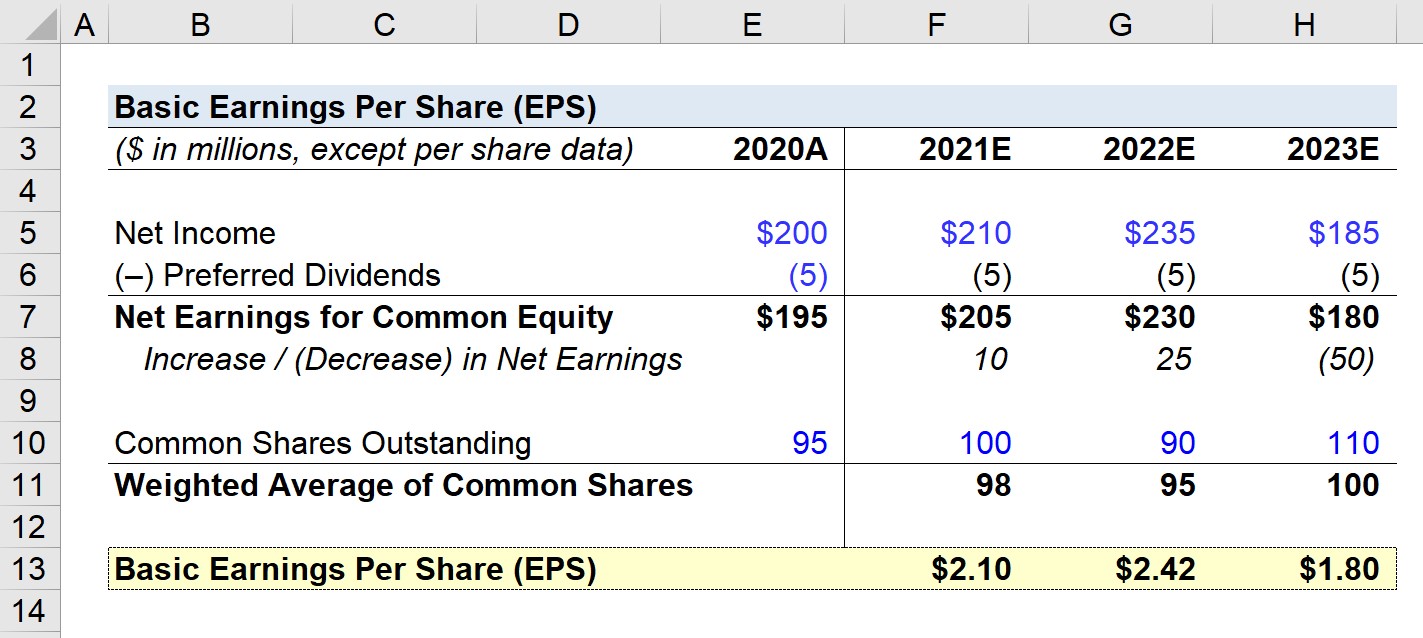

Finance
What Is Credit Piggybacking
Published: January 11, 2024
Discover the power of credit piggybacking in the world of finance and learn how it can help you boost your credit score and achieve your financial goals.
(Many of the links in this article redirect to a specific reviewed product. Your purchase of these products through affiliate links helps to generate commission for LiveWell, at no extra cost. Learn more)
Table of Contents
Introduction
Welcome to the world of credit piggybacking, a strategy that allows individuals to improve their credit scores by leveraging someone else’s good credit history. In the realm of personal finance, credit scores play a vital role in determining our financial health and opportunities. A higher credit score opens doors to better interest rates, increased borrowing power, and improved chances of securing loans, mortgages, and credit cards.
However, building a solid credit history can be a daunting task for those who have limited or no credit history at all. It may take years of responsible credit usage to establish a commendable credit score. This is where credit piggybacking comes into the picture as a potential solution.
Credit piggybacking is the practice of becoming an authorized user on someone else’s credit card account to benefit from their positive credit history. Essentially, individuals who struggle to build credit on their own can piggyback off the established credit of a friend, family member, or even a stranger to boost their credit scores.
While credit piggybacking can be an effective strategy for those looking to improve their credit scores, it is important to understand how it works, its pros and cons, the legality surrounding it, and alternative methods available. This article will explore all these aspects and provide you with a comprehensive understanding of credit piggybacking.
Definition of Credit Piggybacking
Credit piggybacking refers to the practice of adding an individual as an authorized user on someone else’s credit card account for the purpose of gaining the benefits of the primary account holder’s positive credit history. As an authorized user, the individual’s credit report may reflect the account’s history, which can impact their credit score.
Traditionally, credit piggybacking involves a person with limited or poor credit history leveraging the creditworthiness of someone with established good credit. By being added as an authorized user, the individual benefits from the primary account holder’s responsible credit behavior, such as on-time payments, low credit utilization ratio, and a lengthy credit history. This, in turn, can potentially boost the credit score of the authorized user.
It is important to note that credit piggybacking does not involve any actual ownership or responsibility for the credit card account. The authorized user will not have access to the primary account holder’s funds nor be obligated to make payments on the account. Instead, they reap the benefits of the account holder’s positive credit behavior, improving their own creditworthiness in the process.
While credit piggybacking can be mutually beneficial for both parties involved, it is crucial to approach the practice with transparency and trust. The primary account holder should be aware of the impact adding an authorized user may have on their credit profile, and both parties should have a clear understanding of their roles and responsibilities.
How Credit Piggybacking Works
Credit piggybacking involves the process of adding an authorized user to a credit card account. Here’s a step-by-step breakdown of how credit piggybacking works:
- Find a willing primary account holder: The first step is to identify someone with a positive credit history who is willing to add you as an authorized user on their credit card account. This can be a family member, friend, or even a stranger offering credit piggybacking services.
- Agree on terms: Before proceeding, both parties should establish clear terms and expectations. This includes discussing the length of time you will be added as an authorized user, whether you will have access to the physical card, and how the primary account holder will monitor and manage the account.
- Add the authorized user: Once both parties are in agreement, the primary account holder contacts their credit card issuer to add you as an authorized user on their account. They may need your personal information, such as your name and Social Security Number, to complete the process.
- Credit profile update: After you have been added as an authorized user, the credit card issuer typically reports the account’s history to the major credit bureaus. This means that the account’s positive payment history and credit utilization will potentially appear on your credit report.
- Impact on credit score: The primary goal of credit piggybacking is to improve your credit score. Depending on your credit history and the impact of the added credit card account, you may see an increase in your credit score over time. This can open doors to better financial opportunities.
It’s important to note that not all credit card issuers report authorized user accounts to the credit bureaus. Before starting the process of credit piggybacking, it’s essential to confirm with the primary account holder and the credit card issuer whether they report authorized user accounts and how it may affect your credit score.
Additionally, responsible credit behavior on your part is still important for long-term credit health. Credit piggybacking can provide a boost, but it’s crucial to continue building your own credit history by making timely payments, maintaining low credit utilization, and managing your finances wisely.
Pros of Credit Piggybacking
Credit piggybacking can offer several advantages for individuals looking to improve their credit scores. Here are some of the pros of credit piggybacking:
- Credit score boost: One of the main benefits of credit piggybacking is the potential to improve your credit score. By being added as an authorized user on an account with a positive credit history, you can piggyback off that account’s good standing. This can help increase your creditworthiness and expand your financial opportunities.
- Establish credit history: For individuals who are new to credit or have a limited credit history, credit piggybacking can serve as a valuable tool to build a credit profile. By benefiting from someone else’s established credit, you can start developing your own credit history and laying a foundation for future financial endeavors.
- Access to better interest rates: A higher credit score resulting from credit piggybacking can improve your eligibility for lower interest rates on loans, mortgages, and credit cards. This can potentially save you money in the long run and make borrowing more affordable.
- Improved chances of approval: Building credit from scratch can make it difficult to qualify for certain financial products. However, credit piggybacking can increase your chances of approval by showcasing a positive credit history that lenders look for when assessing applications.
- Educational opportunity: Credit piggybacking allows individuals to gain insights into responsible credit management. By observing how the primary account holder handles their finances and credit card usage, you can learn valuable lessons about maintaining a healthy credit profile.
It is important to note that credit piggybacking is not a guaranteed solution for everyone, and its effectiveness may vary depending on individual circumstances. Additionally, the impact on your credit score may not be as significant as actively building your own credit history through responsible credit behavior over time.
Before engaging in credit piggybacking, it’s essential to have open and honest communication with the primary account holder and fully understand the potential benefits and risks involved.
Cons of Credit Piggybacking
While credit piggybacking can offer advantages, there are also potential drawbacks to consider. Here are some of the cons of credit piggybacking:
- Limited control over credit profile: As an authorized user, you have limited control over the credit card account. You don’t have the authority to make decisions or manage the account. This lack of control can be a disadvantage if the primary account holder starts to make irresponsible financial decisions or if the account becomes delinquent.
- Potential for negative impact: While the intention of credit piggybacking is to improve your credit score, there is a possibility that it may have a negative impact. If the primary account holder has a history of late payments, high credit utilization, or other negative credit behaviors, it may reflect on your credit report and potentially lower your credit score.
- Lack of ownership and responsibility: As an authorized user, you are not legally responsible for the credit card debt. However, if the primary account holder fails to make payments or accumulates debt, it could still have indirect consequences on your relationship with them or impact your credit if the account becomes delinquent.
- Dependency on another individual: Credit piggybacking relies on the willingness and cooperation of the primary account holder. If they decide to remove you as an authorized user or close the account, it can impact your credit utilization and potentially lower your credit score. This dependency on another individual’s actions can introduce a level of uncertainty into the process.
- Potential strain on relationships: Adding someone as an authorized user on your credit card account involves a level of trust and willingness to share financial information. However, disagreements, misunderstandings, or conflicts may arise, leading to strain on personal relationships if expectations are not met or if there is a disagreement on how the account is managed.
It is crucial to thoroughly consider these potential drawbacks before entering into a credit piggybacking arrangement. Understanding the risks involved can help you make an informed decision and determine whether credit piggybacking is the right strategy for you.
Legality of Credit Piggybacking
The legality of credit piggybacking is a topic of debate and can vary depending on the specific practices involved. Generally, adding someone as an authorized user to your credit card account is considered legal. However, there are certain factors to consider:
1. Permission and transparency: It is crucial to have the permission and cooperation of the primary account holder when engaging in credit piggybacking. Both parties should have a clear understanding of the arrangement and the impact it may have on their credit profiles.
2. Reporting guidelines: Credit card issuers have their own guidelines regarding the reporting of authorized user accounts to the credit bureaus. While many issuers do report authorized user accounts, some do not. It is important to confirm with the primary account holder and the credit card issuer whether they report authorized user accounts and how it may affect the credit scores of both parties.
3. Fraudulent practices: Engaging in fraudulent practices, such as paying for the sole purpose of becoming an authorized user or providing false information to the credit card issuer, is illegal and can lead to serious consequences. It is important to approach credit piggybacking ethically and within the boundaries of the law.
4. Credit repair organizations: Be cautious of credit repair organizations that offer credit piggybacking services for a fee. While some legitimate companies may offer these services, others may engage in fraudulent practices or mislead individuals about the legality and effectiveness of credit piggybacking.
5. Legislation and regulations: The legal landscape surrounding credit piggybacking can vary across jurisdictions. It is advisable to research and understand the specific laws and regulations in your country or state regarding credit piggybacking practices.
It is important to note that while credit piggybacking itself may be legal, the ethical implications and potential risks associated with the practice should be carefully considered. Transparency, communication, and ethical behavior are vital when engaging in credit piggybacking to ensure compliance with the law and the protection of all parties involved.
Alternatives to Credit Piggybacking
While credit piggybacking can be a viable strategy for improving credit scores, it is not the only option available. Here are some alternatives that individuals can consider:
- Secured credit cards: A secured credit card works by requiring a security deposit that serves as collateral for the credit limit. By using and responsibly managing a secured credit card, individuals can start building their own credit history. Over time, the issuer may transition the card to an unsecured credit card, further strengthening the credit profile.
- Credit builder loans: Credit builder loans are specifically designed to help individuals build or rebuild credit. These loans operate by holding the borrowed funds in a savings account or certificate of deposit while the borrower makes regular payments. Once the loan is repaid, the borrower receives the funds, and their timely payment history is reported to the credit bureaus.
- Authorized user on a non-credit card account: While credit piggybacking typically involves being added as an authorized user on a credit card account, it is also possible to become an authorized user on other types of accounts, such as utility bills or rental payments. Some services specialize in reporting these types of payments to the credit bureaus, contributing to the individual’s credit profile.
- Building credit with installment loans: Taking out an installment loan, such as a personal loan or auto loan, and making consistent on-time payments can help establish credit history. This demonstrates the borrower’s ability to manage different types of credit responsibly and diversifies the credit mix, which is a factor considered in credit scoring models.
- Establishing a credit history with alternative credit data: Not all lenders solely rely on traditional credit reports. Some lenders consider alternative credit data, such as rental payment history, utility bill payments, and even cellphone bills, to assess creditworthiness. It can be beneficial to explore lenders who consider alternative credit data if you have limited or no traditional credit history.
Each of these alternatives offers individuals the opportunity to build credit in their own name, establishing a positive credit history and improving credit scores over time. It is important to research and choose the method that aligns with individual financial goals, resources, and preferences.
Remember, responsible credit behavior, such as making timely payments, keeping credit utilization low, and maintaining a diverse credit mix, is key to establishing and maintaining a strong credit profile. Regularly monitoring credit reports and addressing any discrepancies or errors can also help ensure the accuracy of credit information.
Conclusion
Credit piggybacking can be an appealing strategy for individuals seeking to improve their credit scores by benefiting from someone else’s positive credit history. By becoming an authorized user on another person’s credit card account, individuals can potentially boost their creditworthiness and open doors to better financial opportunities.
However, it is important to approach credit piggybacking with caution and a thorough understanding of the potential benefits and drawbacks. While it can provide a temporary credit score boost, there are risks involved, such as limited control over the account and the potential for negative effects if the primary account holder’s credit behavior changes.
Alternative strategies, such as secured credit cards, credit builder loans, and building credit with installment loans, can offer individuals the opportunity to establish their own credit history and demonstrate responsible credit behavior over time. These methods may provide a more sustainable and long-term approach to improving credit scores.
Regardless of the chosen strategy, it is important to prioritize responsible credit behavior, including making timely payments, keeping credit utilization low, and monitoring credit reports for accuracy. Building a solid credit history takes time and effort, but the rewards of improved financial opportunities and lower interest rates are worth it.
In conclusion, credit piggybacking can be a helpful tool in certain situations, but it is essential to weigh the pros and cons and consider alternative methods for building credit. Taking proactive steps to establish and maintain a strong credit profile will contribute to long-term financial stability and success.














